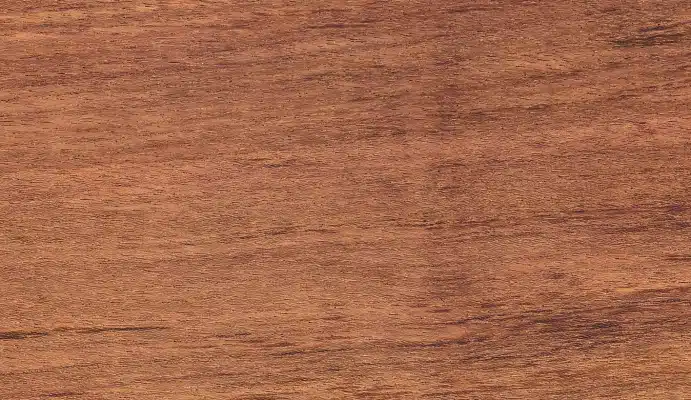
| Origin | Guyana (Guyana, Suriname, French Guiana), South America |
| bulk density | 0,83-0,92 g/cm³ |
| durability class | 1 |
| Compressive strength | 72-77 N/mm² |
| flexural strength | 120-140 N/mm² |
| Differential shrinkage (radial) | 0,11-0,13% |
| Differential shrinkage (tangential) | 0,29-0,31% |
| wood color | light to dark reddish brown or violet brown |
| wood structure | The fibers are straight, rarely with slight alternating growth |
| Usage | typical structural wood in outdoor construction for mechanically and biologically highly stressed applications |
Eperua (Wallaba), a genus with 16 species, experiences timber exploitation primarily through E. falcata, accompanied by minor exploitation of E. grandiflora, E. rubiginosa and E. schomburgkiana. These species are mainly native to the Guyanas (Guyana, Suriname, French Guiana). The heavy and durable structural wood is primarily processed locally and currently only has a small export share to Europe. Eperua falcata (Wallaba), an evergreen tree up to 40 meters high and a trunk diameter of over 80 centimeters, is characterized by a sprawling crown and brownish-gray, slightly rough and scaly bark. In addition to its timber economic importance, the tree also produces a reddish gum known as wallaba gum.
Wallaba, with Eperua falcata as the main species used, impresses with its heartwood with different shades of red, clearly contrasted with the gray-brown sapwood. What is noticeable are visible resin channels in tangential bands and intense resin discharge, which creates dark streaks on the wood surface. The wood is homogeneous, medium-textured and of high density, with subtle flaking on tangential surfaces. When it is fresh, processing is difficult due to the hard wood and resin, while dry wood is easy to process. Drying requires care to minimize warping and cracking. E. falcata heartwood is very resistant to wood-destroying fungi and termites. Wallaba is used as structural wood in outdoor construction, especially for bridges, locks, floating jetties, hydraulic engineering, sewage treatment plants and noise barriers. Also for decking when resin leakage is no longer a concern. The stalked leaves are pinnate in pairs, with leaflets of 4-6 pieces, while the wood is also used medicinally for bark and rubber.
Sources: Wood from the specialist (GD Wood), Wikipedia



